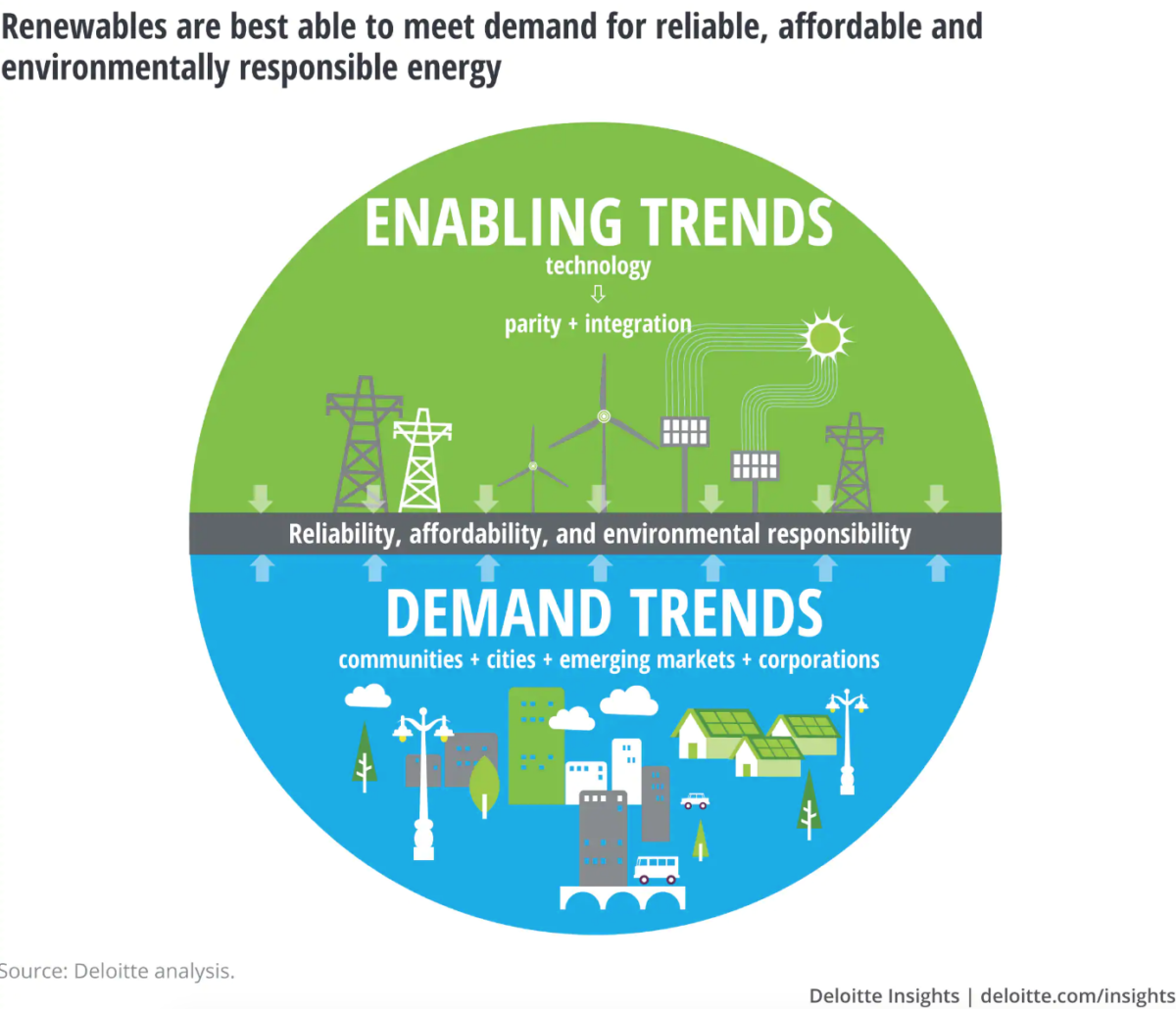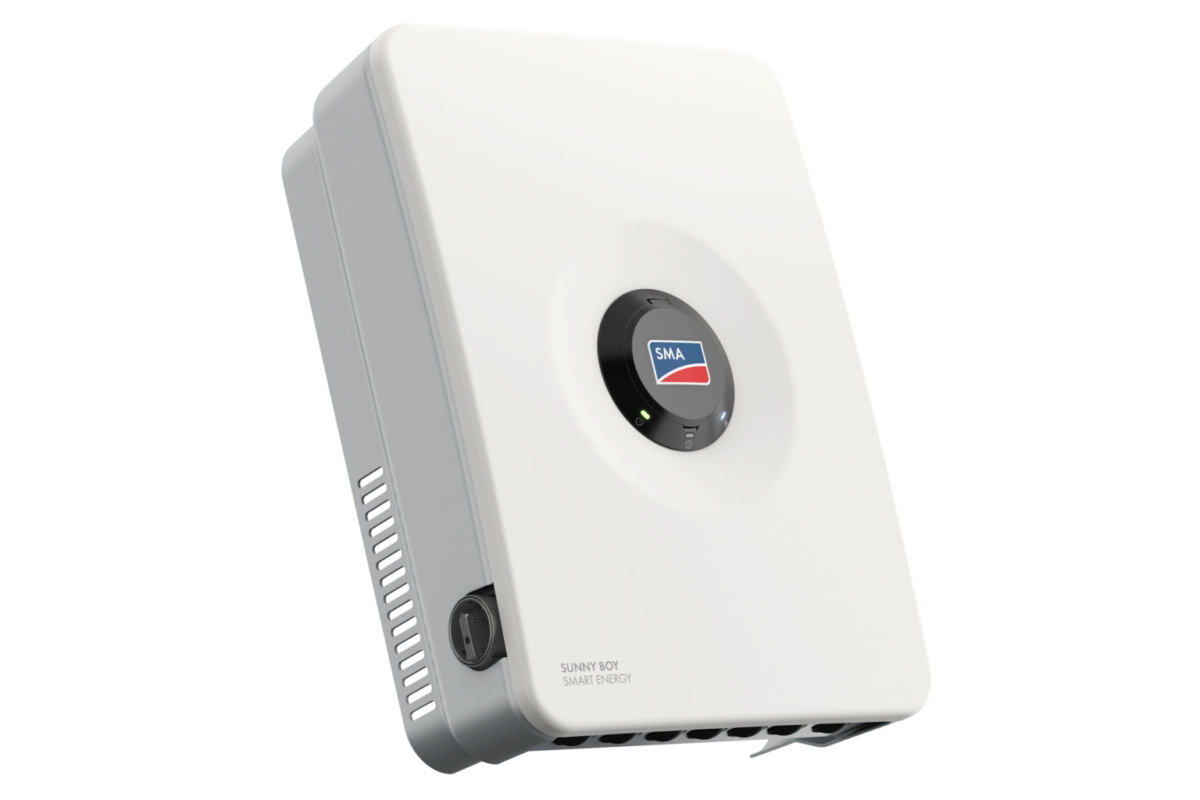Three key enablers – price and performance parity, grid integration and new technologies – are allowing solar and wind power to compete with conventional sources on price, while matching their performance, says Deloitte.
In its new report Global Renewable Energy Trends, the global accounting giant says renewables, which have only recently been recognized as mainstream energy sources, are now becoming the preferred ones: “Demand for renewable energy sources has grown tremendously in recent years,” says Marlene Motyka, Deloitte U.S. and global renewable energy leader and principal, Deloitte Transactions and Business Analytics LLP. “Governments, communities, emerging markets, and corporations increasingly understand that renewables are sustainable and affordable, and they want them included in current and future procurement plans.”
Key enablers
Reaching price and performance parity: Steeply declining cost curves have made solar and wind comparable or even cheaper than conventional generation technologies across the top global markets, even without subsidies, the report finds.
Increasingly affordable storage options are now making renewables more dispatchable — once an advantage of conventional sources. Renewables+ storage are also reaching price parity as li-ion battery costs have fallen nearly 80% since 2010, as solar penetration has increased.
In terms of prices, utility-scale solar is hot on onshore wind’s heels, as the second-cheapest energy source with an LCOE range (US$43–53/MWh) lower than that of any other generation source, and has reached price parity in all leading markets, except Japan. Globally, Australia has the lowest costs for solar PV, and Africa has the highest due to investment costs, the report reads.
When it comes to self-generation, commercial solar has reached unsubsidized socket parity in parts of all the top solar markets that are at grid parity, except for India, while incentives such as tax credits and net metering have made residential solar PV competitive in these markets too, and mandatory for new construction in California beginning in 2020.
Cost effective and reliable grid integration: Once seen as an obstacle because of their intermittency, wind and solar power are now viewed as a solution to grid balancing, says Deloitte.
While placing downward pressure on electricity prices, solar and wind have also demonstrated an ability to strengthen grid resilience and reliability and provide essential grid services. For instance, U.S. states with the fewest outages are among the top solar and wind states, while three quarters of the top 20 U.S. solar and wind states have electricity prices below the U.S. national average.
Smart inverters and advanced controls have enabled wind and solar to provide grid reliability services related to frequency, voltage, and ramping as well or better than other generation sources, the report reads.
When combined with smart inverters, wind and solar can ramp up much faster than conventional plants, helping to stabilize the grid even after the sun sets and the wind stops, and, for PV, show much higher response accuracy than any other source.
The impact of new technologies: The rise of technologies such as blockchain, artificial intelligence (AI) and 3-D printing is accelerating the deployment of renewables, and supporting the previous two trends to further decrease costs and facilitate integration.
The technologies range from those streamlining the production and operation of renewables (automation and advanced manufacturing) to those optimizing their use (AI in weather forecasting), improving the market for renewables (blockchain that can enable energy attribute certificate (EAC) markets to help resolve trust and bureaucratic hurdles), and transforming the materials of solar panels and wind turbines (advanced materials – such as perovskites), Deloitte says.
Trends on the demand side
Smart renewable cities, communities, emerging markets and corporations are increasingly driving the demand for renewables, as costs continue to fall and accessibility increases, the Deloitte report finds.
Smart renewable cities have solar and/or wind power and a smart city plan that includes a renewable energy component, as well as a proactive “smart” approach to managing their infrastructure with connected sensor technology and data analytics. Their number across the globe continues to grow, but for now San Diego is the undisputed leader.
With the addition of storage and management systems, the original trend toward “community solar“ has expanded into “community energy“, says Deloitte.
While in off-grid areas it means electrification, in on-grid areas it allows communities to be powered independently from the grid. As a result, many countries have embraced community energy as it enables access to the benefits of renewables deployment.
Another major trend driving the demand for renewables is the rise of emerging markets, which are overtaking developed countries in solar and wind capacity deployment, the report shows.
With China out in front, emerging markets have helped bring down the cost of renewables and are innovating in terms of market and product design in ways that benefit the developed world.
Deployment of renewable is also powered by corporations, with many large corporations pursuing Power Purchase Agreements and smaller corporations turning to aggregation.
Currently two-thirds of Fortune 100 companies have set renewable energy targets and are leading global corporate procurement, signaling an important commitment from the private sector, the report notes.
This content is protected by copyright and may not be reused. If you want to cooperate with us and would like to reuse some of our content, please contact: editors@pv-magazine.com.




1 comment
By submitting this form you agree to pv magazine using your data for the purposes of publishing your comment.
Your personal data will only be disclosed or otherwise transmitted to third parties for the purposes of spam filtering or if this is necessary for technical maintenance of the website. Any other transfer to third parties will not take place unless this is justified on the basis of applicable data protection regulations or if pv magazine is legally obliged to do so.
You may revoke this consent at any time with effect for the future, in which case your personal data will be deleted immediately. Otherwise, your data will be deleted if pv magazine has processed your request or the purpose of data storage is fulfilled.
Further information on data privacy can be found in our Data Protection Policy.